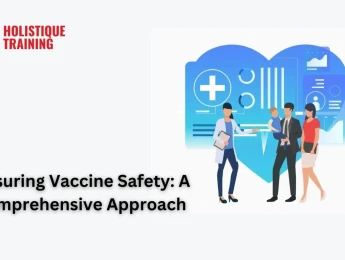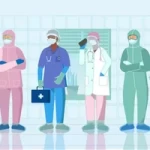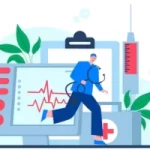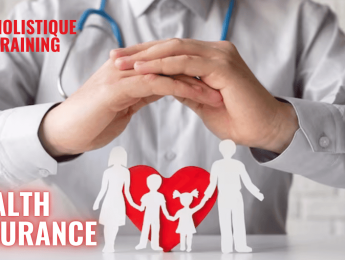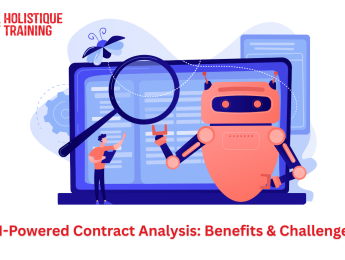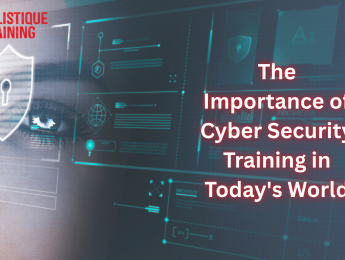- Table of Contents
- Introduction
- What is Medical Vaccine Safety?
- Why is Medical Vaccine Safety Important?
- 1. Protecting Public Health
- 2. Building Public Trust
- 3. Regulatory Compliance
- 4. Continuous Improvement
- 5. Responding to Emerging Threats
- 6. Ethical Considerations
- 7. Supporting Health Systems
- How to Ensure Medical Vaccine Safety
- 1. Rigorous Preclinical Testing
- Before a vaccine is administered to humans, it undergoes extensive preclinical testing to evaluate its safety and efficacy. This phase involves several critical steps:
- Laboratory Studies: Researchers conduct laboratory experiments to assess the vaccine's ability to stimulate an immune response. These studies help identify the optimal formulation, dosage, and potential side effects. Safety tests often include toxicity studies, where the vaccine is tested in animal models to determine its safety profile and identify any adverse reactions.
- Animal Trials: Vaccines are tested in animal models following laboratory studies to evaluate their safety and effectiveness further. These trials help researchers observe any unexpected side effects and assess the vaccine's immunogenicity or its ability to provoke an immune response. Animal testing is crucial for identifying potential risks before human trials begin.
- 2. Clinical Trials
- Once a vaccine passes preclinical testing, it progresses to clinical trials, which are conducted in three phases to ensure safety and efficacy:
- Phase 1 Trials: This phase involves a small group of healthy volunteers, typically ranging from 20 to 100 participants. The primary goal is to assess the vaccine's safety, identify any side effects, and determine the appropriate dosage. Participants are closely monitored for adverse events, and data collected during this phase is essential for making decisions about the vaccine's future development.
- Phase 2 Trials: In this phase, the vaccine is administered to a larger group of individuals (hundreds) who are representative of the target population. Researchers continue to monitor safety and begin to evaluate the vaccine's effectiveness. This phase often involves different dosages and may include a placebo group to assess the vaccine's impact better.
- Phase 3 Trials: Phase 3 trials involve thousands of participants and are designed to confirm the vaccine's effectiveness in preventing the disease. Researchers compare the outcomes of vaccinated individuals with those who received a placebo. The data collected during this phase is critical for regulatory approval and further informs the vaccine's safety profile.
- 3. Regulatory Approval
- Upon successful completion of clinical trials, the vaccine manufacturer submits a comprehensive application to regulatory agencies for approval:
- Evaluation by Regulatory Agencies: Regulatory bodies, such as the U.S. Food and Drug Administration (FDA) or the European Medicines Agency (EMA), review the data from preclinical and clinical trials. These evaluations focus on the vaccine's safety, efficacy, and manufacturing processes. A vaccine will receive regulatory approval for public use only after thorough scrutiny and confirmation of safety and efficacy.
- Licensing and Monitoring: Once approved, vaccines receive a licence for distribution. Regulatory agencies continue to monitor the manufacturing processes to ensure consistency and adherence to safety standards. Manufacturers must comply with Good Manufacturing Practices (GMP) to ensure vaccine quality and safety.
- 4. Post-Marketing Surveillance
- Even after a vaccine is approved and distributed, ongoing monitoring is essential to ensure continued safety:
- Adverse Event Reporting Systems: Countries maintain surveillance systems to track adverse events following vaccination. In the United States, the Vaccine Adverse Event Reporting System (VAERS) allows healthcare providers and the public to report any adverse reactions experienced after vaccination. This data is crucial for identifying patterns or unexpected side effects.
- Long-Term Studies: Ongoing studies assess the long-term safety and efficacy of vaccines. These studies may involve monitoring specific populations or conducting cohort studies to observe potential long-term effects. The information gathered informs healthcare providers and regulatory agencies about the vaccine’s safety profile over time.
- Risk Communication: Transparency is critical in post-marketing surveillance. Regulatory agencies must communicate findings about vaccine safety to healthcare providers and the public. Providing clear and accurate information helps maintain trust and encourages continued vaccination efforts.
- 5. Standards and Compliance
- Adherence to established safety standards and regulations is vital for ensuring vaccine safety:
- International Guidelines: The World Health Organization (WHO) and other international bodies set guidelines for vaccine safety. These guidelines outline best vaccine development, manufacturing, testing, and post-marketing surveillance practices. Compliance with these guidelines is crucial for maintaining global health standards.
- Local Regulations: In addition to international guidelines, individual countries have their own regulatory frameworks governing vaccine safety. Compliance with these local regulations ensures that vaccines meet each population's specific needs and standards.
- 6. Education and Training
- Education plays a crucial role in ensuring vaccine safety:
- Healthcare Provider Training: Ongoing training for healthcare providers about vaccine safety, administration techniques, and adverse event recognition is essential. Educating healthcare professionals empowers them to provide accurate information to patients and address any concerns about vaccines.
- Public Awareness Campaigns: Public health campaigns to educate the community about vaccine safety, benefits, and potential side effects can help alleviate fears and misconceptions. Clear communication is essential for building trust and encouraging vaccine uptake.
- 7. Stakeholder Collaboration
- Collaboration among various stakeholders is essential for ensuring vaccine safety:
- Partnerships with Pharmaceutical Companies: Regulatory agencies must maintain strong partnerships with vaccine manufacturers to ensure adherence to safety standards throughout the vaccine development and distribution process. Collaborative efforts can help address safety concerns and streamline communication about potential risks.
- Engagement with Community Organizations: Public health officials should engage with community organisations, advocacy groups, and healthcare providers to gather input and feedback on vaccine safety initiatives. This engagement fosters trust and encourages community participation in vaccination programs.
- 8. Research and Innovation
- Continued research and innovation are essential for enhancing vaccine safety:
- Improved Formulations: Ongoing research into vaccine formulations can lead to safer and more effective vaccines. Advances in technology may enable the development of adjuvants that enhance immune responses while minimising side effects, leading to safer vaccines overall.
- Adaptive Clinical Trials: Innovative trial designs, such as adaptive clinical trials, allow for real-time modifications based on emerging data. These designs can facilitate quicker responses to safety concerns and improve the overall efficiency of vaccine development.
- Ensuring medical vaccine safety is a complex but vital undertaking that spans multiple stages of a vaccine’s lifecycle, from initial development to post-marketing surveillance. By adhering to rigorous testing standards, regulatory compliance, ongoing monitoring, and effective communication, healthcare professionals and regulatory agencies can safeguard public health and build trust in vaccination programs. Collaboration, education, and continuous research will further enhance vaccine safety, ensuring that these essential tools remain effective in preventing infectious diseases and protecting communities worldwide.
- How is Medical Vaccine Safety Monitored?
- 1. Adverse Event Reporting Systems
- 2. Active Surveillance Systems
- 3. Longitudinal Studies
- 4. Data Analysis and Signal Detection
- 5. Collaboration with Healthcare Providers
- 6. Regulatory Oversight
- 7. Public Communication and Transparency
- 8. International Collaboration
- 9. Research and Innovation
- The Importance of Risk Management in Healthcare
- 1. Identifying Risks
- 2. Assessing Risks
- 3. Mitigating Risks
- 4. Monitoring and Reviewing
- 5. Legal and Ethical Considerations
- Principles of a Healthcare Risk Management Plan
- 1. Proactive Identification of Risks
- 2. Comprehensive Risk Assessment
- 3. Implementation of Risk Mitigation Strategies
- 4. Continuous Monitoring and Evaluation
- 5. Communication and Transparency
- 6. Interdisciplinary Collaboration
- 7. Legal and Regulatory Compliance
- 8. Patient-Centred Approach
- 9. Continuous Improvement Culture
- Conclusion
Introduction
Vaccines have been pivotal in advancing public health, significantly reducing the burden of infectious diseases. With the increasing complexity of vaccine development and deployment, the emphasis on medical vaccine safety and risk management has become paramount. This blog post explores the multifaceted aspects of vaccine safety, its importance, and the robust mechanisms in place to ensure the efficacy and safety of vaccines. Additionally, it delves into the role of risk management in healthcare and outlines key principles of an effective healthcare risk management plan.
What is Medical Vaccine Safety?
Medical vaccine safety refers to evaluating, monitoring, and managing the risks associated with vaccine administration. It encompasses a comprehensive framework to ensure that vaccines do not cause adverse effects that outweigh their benefits. This safety is assessed through rigorous clinical trials before a vaccine is approved for public use and continues throughout the vaccine's lifecycle.
Medical vaccine safety is grounded in several critical elements:
- Efficacy: The ability of a vaccine to produce the desired immune response.
- Safety: The assessment of potential adverse events and establishing acceptable safety profiles.
- Quality Control: Ensuring vaccines meet stringent manufacturing standards and are contaminant-free.
The focus on medical vaccine safety is a commitment to protecting public health. Health authorities can foster trust in immunisation programs and enhance vaccine uptake by ensuring vaccines are effective and safe.
Why is Medical Vaccine Safety Important?
The importance of medical vaccine safety cannot be overstated, as it encompasses various dimensions that significantly impact public health, trust in healthcare systems, and the successful implementation of vaccination programs. A comprehensive understanding of vaccine safety is essential for safeguarding individuals and communities against infectious diseases. Here are several key reasons highlighting the critical nature of medical vaccine safety:
1. Protecting Public Health
Vaccines are among the most effective tools for preventing infectious diseases. By ensuring that vaccines are safe, we protect public health on multiple levels:
- Community Immunity: Vaccination protects the individuals who receive it and contributes to herd immunity. When a significant portion of the population is immunised, it helps reduce the spread of infectious diseases, protecting those who cannot be vaccinated, such as individuals with certain medical conditions or allergies.
- Outbreak Prevention: Vaccines have historically been vital in controlling and eradicating diseases like smallpox and polio. Ensuring the safety of vaccines is essential to maintaining these successes and preventing outbreaks of vaccine-preventable diseases. For instance, a resurgence of diseases like measles or whooping cough can occur when vaccination rates decline due to safety concerns.
2. Building Public Trust
Public confidence in vaccination programs is critical for their success. Medical vaccine safety is intrinsically linked to how the public perceives vaccines:
- Addressing Misinformation: Recently, misinformation about vaccine safety has increased, contributing to vaccine hesitancy. Transparent communication regarding the rigorous processes that ensure vaccine safety is essential to counter these narratives. Public health authorities must actively engage with communities to dispel myths and provide factual information about vaccine safety and effectiveness.
- Community Engagement: Building trust must involve listening to community concerns, addressing fears, and providing evidence-based information about vaccine safety. This engagement fosters a partnership between healthcare providers and the public, which is essential for achieving high vaccination rates.
3. Regulatory Compliance
Governments and health organisations worldwide have established regulatory frameworks designed to ensure vaccine safety. Compliance with these regulations is crucial for:
- Maintaining Standards: Regulatory agencies, such as the U.S. Food and Drug Administration (FDA) and the World Health Organization (WHO), set rigorous standards for vaccine development, manufacturing, and monitoring. These agencies evaluate safety data before approving public use. Adhering to these standards is critical for maintaining public health safety.
- Legal Liability: Ensuring vaccine safety also protects healthcare organisations from legal liability. If adverse events occur that could have been prevented through adherence to established safety protocols, organisations may face legal repercussions, undermining trust in the healthcare system.
4. Continuous Improvement
The assessment and monitoring of vaccine safety are ongoing processes that facilitate continuous improvement in vaccine development and administration practices:
- Feedback Loops: Data collection on adverse events enables healthcare authorities to identify patterns and adjust vaccine formulations or administration practices. This continuous feedback loop ensures that vaccines remain effective and safe over time.
- Research and Development: Ongoing research into vaccine safety and efficacy leads to advancements in vaccine technology. Innovations may include more refined formulations, improved delivery methods, or new adjuvants that enhance immune responses while minimising side effects.
5. Responding to Emerging Threats
The landscape of infectious diseases is constantly evolving, necessitating the development of new vaccines to address emerging pathogens. Ensuring vaccine safety is crucial for:
- Rapid Response to Outbreaks: Rapid vaccine development and deployment are essential in the event of a novel disease outbreak. Safety assessments must keep pace with accelerated timelines to ensure that public health interventions are effective and trustworthy.
- Global Health Security: Vaccine safety is critical to global health security. Collaboration among international health organisations and regulatory bodies enhances vaccine safety standards worldwide, helping to address threats that transcend borders.
6. Ethical Considerations
Vaccine safety is also an ethical issue, encompassing the principles of justice, beneficence, and autonomy:
- Informed Consent: Ensuring vaccine safety allows individuals to make informed choices about their health. Healthcare providers have an ethical obligation to present accurate information about the risks and benefits of vaccination, allowing patients to weigh their options and make decisions that align with their values.
- Equitable Access: Promoting vaccine safety and efficacy is also a matter of social justice. Vulnerable populations must have access to safe vaccines to protect their health and well-being. Ensuring safety standards are met helps to avoid disparities in vaccine access and uptake among different communities.
7. Supporting Health Systems
Finally, medical vaccine safety contributes to the overall robustness of healthcare systems:
- Resource Allocation: Safe vaccines lead to fewer adverse events and complications, reducing the burden on healthcare systems. This, in turn, allows for more efficient resource allocation to other critical areas of public health and patient care.
- Long-Term Sustainability: Trust in vaccine safety contributes to long-term sustainability in public health initiatives. When communities believe in vaccine safety, they are more likely to participate in vaccination programs, leading to higher immunisation rates and improved public health outcomes.
The significance of medical vaccine safety extends far beyond individual protection; it encompasses public health, community trust, regulatory compliance, continuous improvement, ethical considerations, and the resilience of healthcare systems. By prioritising vaccine safety and maintaining rigorous monitoring systems, we can ensure that vaccination remains a cornerstone of public health, safeguarding individuals and communities against preventable diseases. Addressing concerns about vaccine safety transparently and collaboratively is vital for fostering trust, enhancing vaccination uptake, and ultimately improving health outcomes for populations worldwide.
How to Ensure Medical Vaccine Safety
Ensuring medical vaccine safety involves a multi-faceted approach that includes adherence to standards, compliance with regulations, and a commitment to ongoing monitoring and evaluation. Key strategies include:
1. Rigorous Preclinical Testing
Before a vaccine is administered to humans, it undergoes extensive preclinical testing to evaluate its safety and efficacy. This phase involves several critical steps:
Laboratory Studies: Researchers conduct laboratory experiments to assess the vaccine's ability to stimulate an immune response. These studies help identify the optimal formulation, dosage, and potential side effects. Safety tests often include toxicity studies, where the vaccine is tested in animal models to determine its safety profile and identify any adverse reactions.
Animal Trials: Vaccines are tested in animal models following laboratory studies to evaluate their safety and effectiveness further. These trials help researchers observe any unexpected side effects and assess the vaccine's immunogenicity or its ability to provoke an immune response. Animal testing is crucial for identifying potential risks before human trials begin.
2. Clinical Trials
Once a vaccine passes preclinical testing, it progresses to clinical trials, which are conducted in three phases to ensure safety and efficacy:
Phase 1 Trials: This phase involves a small group of healthy volunteers, typically ranging from 20 to 100 participants. The primary goal is to assess the vaccine's safety, identify any side effects, and determine the appropriate dosage. Participants are closely monitored for adverse events, and data collected during this phase is essential for making decisions about the vaccine's future development.
Phase 2 Trials: In this phase, the vaccine is administered to a larger group of individuals (hundreds) representative of the target population. Researchers continue to monitor safety and begin to evaluate the vaccine's effectiveness. This phase often involves different dosages and may include a placebo group to better assess the vaccine's impact.
Phase 3 Trials: Phase 3 trials involve thousands of participants and are designed to confirm the vaccine's effectiveness in preventing the disease. Researchers compare the outcomes of vaccinated individuals with those who received a placebo. The data collected during this phase is critical for regulatory approval and further informs the vaccine's safety profile.
3. Regulatory Approval
Upon successful completion of clinical trials, the vaccine manufacturer submits a comprehensive application to regulatory agencies for approval:
Evaluation by Regulatory Agencies: Regulatory bodies, such as the U.S. Food and Drug Administration (FDA) or the European Medicines Agency (EMA), review the data from preclinical and clinical trials. These evaluations focus on the vaccine's safety, efficacy, and manufacturing processes. A vaccine will receive regulatory approval for public use only after thorough scrutiny and confirmation of safety and efficacy.
Licensing and Monitoring: Once approved, vaccines receive a licence for distribution. Regulatory agencies continue to monitor the manufacturing processes to ensure consistency and adherence to safety standards. Manufacturers must comply with Good Manufacturing Practices (GMP) to ensure vaccine quality and safety.
4. Post-Marketing Surveillance
Even after a vaccine is approved and distributed, ongoing monitoring is essential to ensure continued safety:
Adverse Event Reporting Systems: Countries maintain surveillance systems to track adverse events following vaccination. In the United States, the Vaccine Adverse Event Reporting System (VAERS) allows healthcare providers and the public to report any adverse reactions experienced after vaccination. This data is crucial for identifying patterns or unexpected side effects.
Long-Term Studies: Ongoing studies assess the long-term safety and efficacy of vaccines. These studies may involve monitoring specific populations or conducting cohort studies to observe potential long-term effects. The information gathered informs healthcare providers and regulatory agencies about the vaccine’s safety profile over time.
Risk Communication: Transparency is critical in post-marketing surveillance. Regulatory agencies must communicate findings about vaccine safety to healthcare providers and the public. Providing clear and accurate information helps maintain trust and encourages continued vaccination efforts.
5. Standards and Compliance
Adherence to established safety standards and regulations is vital for ensuring vaccine safety:
International Guidelines: The World Health Organization (WHO) and other international bodies set guidelines for vaccine safety. These guidelines outline best vaccine development, manufacturing, testing, and post-marketing surveillance practices. Compliance with these guidelines is crucial for maintaining global health standards.
Local Regulations: Besides international guidelines, individual countries have their own regulatory frameworks governing vaccine safety. Compliance with these local regulations ensures that vaccines meet each population's specific needs and standards.
6. Education and Training
Education plays a crucial role in ensuring vaccine safety:
Healthcare Provider Training: Ongoing training for healthcare providers about vaccine safety, administration techniques, and adverse event recognition is essential. Educating healthcare professionals empowers them to provide accurate information to patients and address any concerns about vaccines.
Public Awareness Campaigns: Public health campaigns to educate the community about vaccine safety, benefits, and potential side effects can help alleviate fears and misconceptions. Clear communication is essential for building trust and encouraging vaccine uptake.
7. Stakeholder Collaboration
Collaboration among various stakeholders is essential for ensuring vaccine safety:
Partnerships with Pharmaceutical Companies: Regulatory agencies must maintain strong partnerships with vaccine manufacturers to ensure adherence to safety standards throughout the vaccine development and distribution process. Collaborative efforts can help address safety concerns and streamline communication about potential risks.
Engagement with Community Organizations: Public health officials should engage with community organisations, advocacy groups, and healthcare providers to gather input and feedback on vaccine safety initiatives. This engagement fosters trust and encourages community participation in vaccination programs.
8. Research and Innovation
Continued research and innovation are essential for enhancing vaccine safety:
Improved Formulations: Ongoing research into vaccine formulations can lead to safer and more effective vaccines. Advances in technology may enable the development of adjuvants that enhance immune responses while minimising side effects, leading to safer vaccines overall.
Adaptive Clinical Trials: Innovative trial designs like adaptive clinical trials allow for real-time modifications based on emerging data. These designs can facilitate quicker responses to safety concerns and improve the overall efficiency of vaccine development.
Ensuring medical vaccine safety is a complex but vital undertaking that spans multiple stages of a vaccine’s lifecycle, from initial development to post-marketing surveillance. By adhering to rigorous testing standards, regulatory compliance, ongoing monitoring, and effective communication, healthcare professionals and regulatory agencies can safeguard public health and build trust in vaccination programs. Collaboration, education, and continuous research will further enhance vaccine safety, ensuring that these essential tools remain effective in preventing infectious diseases and protecting communities worldwide.
How is Medical Vaccine Safety Monitored?
Monitoring medical vaccine safety is critical to public health, ensuring vaccines remain safe and effective throughout their lifecycle. This ongoing surveillance process involves several methodologies, frameworks, and systems designed to detect and respond to potential safety concerns associated with vaccines. Health authorities can maintain public confidence in vaccination programs and enhance community health by systematically tracking adverse events and conducting robust analyses. Here’s a detailed overview of how medical vaccine safety is monitored:
1. Adverse Event Reporting Systems
Adverse event reporting systems are fundamental to monitoring vaccine safety. These systems allow healthcare providers and the public to report any unexpected health issues following vaccination:
- Vaccine Adverse Event Reporting System (VAERS): In the United States, VAERS is a national system for monitoring the safety of vaccines. Healthcare providers, patients, and caregivers can submit reports on adverse events occurring after vaccination. VAERS collects data on potential side effects, ranging from mild reactions, such as soreness at the injection site, to more severe events, such as hospitalisation. This system is vital for identifying patterns that may indicate a safety concern.
- Global Reporting Systems: Similar reporting systems exist globally, such as the Yellow Card Scheme in the UK and the EUDRA Vigilance in Europe. These systems facilitate international collaboration and data sharing, enabling health authorities to identify and address vaccine safety issues across different populations.
2. Active Surveillance Systems
While passive reporting systems like VAERS rely on voluntary submissions, active surveillance systems proactively monitor vaccine safety:
- Vaccine Safety Datalink (VSD): The VSD is a collaboration between the CDC and several large healthcare organisations in the U.S. This system continuously analyses electronic health records to detect potential vaccine safety issues. By comparing vaccinated populations with unvaccinated controls, the VSD can identify signals indicating possible adverse effects.
- Clinical Research Networks: Active surveillance is often conducted through clinical research networks facilitating ongoing vaccine safety studies. These networks monitor the health outcomes of vaccinated individuals in real-time, allowing researchers to identify any adverse events that may arise post-vaccination quickly.
3. Longitudinal Studies
Longitudinal studies track the health of vaccinated individuals over extended periods, providing insights into the long-term safety and efficacy of vaccines:
- Cohort Studies: Researchers conduct cohort studies to follow groups of vaccinated individuals over time, comparing their health outcomes with those of unvaccinated individuals. These studies help identify any long-term adverse effects or delayed reactions to vaccines, contributing to a more comprehensive understanding of vaccine safety.
- Registry Studies: Vaccine registries are databases that collect information about individuals who receive vaccines, including demographic data and health outcomes. These registries facilitate ongoing vaccine safety monitoring, especially for newly approved vaccines.
4. Data Analysis and Signal Detection
Monitoring vaccine safety involves systematic data analysis to identify potential safety signals:
- Statistical Methods: Health authorities employ various statistical methods to analyse data from adverse event reporting systems and active surveillance. Techniques such as disproportionality analysis and Bayesian data mining help identify whether a particular adverse event occurs more frequently than expected following vaccination.
- Regular Review of Data: Regulatory agencies routinely review safety data from multiple sources, including clinical trials, post-marketing surveillance, and adverse event reports. This comprehensive analysis helps detect emerging safety signals, allowing for timely interventions if needed.
5. Collaboration with Healthcare Providers
Healthcare providers play a vital role in monitoring vaccine safety:
- Education and Training: Training healthcare professionals to recognize and report adverse events is crucial. Ongoing education about the importance of vaccine safety monitoring empowers providers to effectively communicate potential risks to patients.
- Feedback Mechanisms: Healthcare providers can offer valuable insights into vaccine safety through feedback mechanisms. Regular communication between public health authorities and healthcare professionals helps identify and address any safety concerns that may arise in clinical practice.
6. Regulatory Oversight
Regulatory agencies are responsible for ensuring that vaccines meet safety standards both before and after approval:
- Post-Marketing Studies: Regulatory agencies may require manufacturers to conduct post-marketing studies to evaluate further vaccine safety and efficacy in larger, more diverse populations. These studies provide additional data on real-world vaccine performance and help confirm safety profiles.
- Periodic Safety Reviews: Regulatory authorities regularly review vaccine safety data to ensure compliance with safety standards. This includes evaluating data from reporting systems, clinical trials, and active surveillance efforts. If new safety concerns arise, agencies can take appropriate actions, such as issuing warnings, updating guidelines, or even suspending a vaccine if necessary.
7. Public Communication and Transparency
Effective communication is essential for maintaining public trust in vaccination programs:
- Transparent Reporting: Public health agencies must communicate vaccine safety information transparently. Regular updates about vaccine safety, including any identified risks or side effects, help the public make informed decisions about vaccination.
- Engaging Communities: Health authorities should engage with communities to address concerns about vaccine safety. Open dialogues with community leaders and organisations foster trust and encourage public participation in vaccination programs.
8. International Collaboration
Global health organisations, such as the World Health Organization (WHO), play a crucial role in coordinating vaccine safety monitoring efforts worldwide:
- Sharing Best Practices: WHO facilitates sharing best practices and lessons learned from various countries regarding vaccine safety monitoring. This collaborative approach helps strengthen global vaccine safety frameworks and responses.
- Global Databases: International databases allow countries to report and analyse adverse events collectively. By pooling data, health authorities can better understand vaccine safety and identify any global trends indicating potential risks.
9. Research and Innovation
Continuous research and innovation in vaccine safety monitoring practices are essential for adapting to new challenges:
- Emerging Technologies: Technological advances like machine learning and artificial intelligence are being explored to enhance vaccine safety monitoring. These technologies can analyse large datasets more efficiently, allowing for quicker identification of safety signals.
- Adaptive Monitoring Systems: Developing adaptive monitoring systems that can respond to emerging safety concerns in real time will be crucial as new vaccines are introduced and populations evolve. These systems can adjust monitoring protocols based on current data and trends.
Monitoring medical vaccine safety is an ongoing and multifaceted process that requires collaboration, innovation, and transparency. By utilising a combination of passive and active surveillance systems, longitudinal studies, regulatory oversight, and effective communication, health authorities can ensure the continued safety and efficacy of vaccines. Engaging healthcare providers and communities in this process fosters trust and empowers individuals to make informed decisions about vaccination, ultimately contributing to improved public health outcomes. As new vaccines are developed and introduced, ongoing vigilance in monitoring vaccine safety will be crucial to protecting individuals and communities from preventable diseases.
Metric | Description |
Adverse Event Reporting Rate | Tracks the frequency of reported side effects |
Vaccination Coverage Rate | Measures the percentage of vaccinated individuals |
Serious Adverse Events (SAEs) | Monitors significant health issues post-vaccination |
Vaccine Effectiveness Studies | Assesses the vaccine's ability to prevent disease |
Post-Market Surveillance | Ongoing monitoring of vaccine safety after approval |
Table: Metrics to measure medical vaccine safety
The Importance of Risk Management in Healthcare
Risk management in healthcare is a systematic approach to identifying, assessing, and mitigating risks that could negatively impact patient safety and organisational performance. Risk management plays a crucial role in ensuring that potential adverse effects are minimised and managed effectively in the context of vaccine safety.
1. Identifying Risks
Risk management begins with identifying potential risks associated with vaccine administration. This includes assessing the likelihood of adverse events, potential manufacturing defects, and errors in administration. A thorough understanding of these risks enables healthcare organisations to develop mitigation strategies.
2. Assessing Risks
Once risks are identified, healthcare organisations must assess their potential impact on patient safety and organisational performance. Risk assessment involves evaluating the severity of potential adverse events and determining the likelihood of their occurrence. This information guides the development of risk management plans.
3. Mitigating Risks
Effective risk management strategies are essential for mitigating identified risks. This can involve implementing training programs for healthcare providers, establishing protocols for vaccine administration, and ensuring robust reporting systems for adverse events. Proactive measures can significantly reduce the likelihood of adverse events occurring.
4. Monitoring and Reviewing
Risk management is an ongoing process that requires continuous monitoring and review. Healthcare organisations must regularly assess their risk management strategies, adapting them as necessary based on new data and emerging risks. Regular audits and feedback mechanisms help ensure that risk management practices remain effective.
5. Legal and Ethical Considerations
Risk management in healthcare must also consider legal and ethical implications. Ensuring informed consent, maintaining transparency about potential risks, and addressing concerns about vaccine safety are critical for fostering public trust and complying with regulatory requirements.
Principles of a Healthcare Risk Management Plan
A healthcare risk management plan is a structured approach to identifying, assessing, and mitigating risks within a healthcare setting. It aims to enhance patient safety, protect the organisation’s assets, and ensure compliance with regulatory standards. Developing an effective risk management plan involves adhering to several foundational principles that guide the process. These principles serve as the framework for creating a culture of safety and resilience within healthcare organisations.
1. Proactive Identification of Risks
Proactive identification is the cornerstone of effective risk management. It involves continuously scanning the environment to identify potential risks before they materialise. This proactive approach includes:
- Risk Assessment Tools: Risk assessments, audits, and safety checklists can help organisations systematically identify risks associated with clinical procedures, operational processes, and environmental hazards.
- Stakeholder Input: Engaging various stakeholders—such as healthcare providers, administrative staff, patients, and even families—can provide valuable insights into potential risks that may not be immediately apparent. Involving frontline staff in identifying risks ensures that the plan reflects the realities of daily operations.
2. Comprehensive Risk Assessment
Once risks are identified, the next step is to conduct a comprehensive risk assessment. This principle emphasises:
- Prioritisation of Risks: Not all risks are equal regarding their potential impact on patient safety or organisational operations. By prioritising risks based on their likelihood and severity, organisations can focus their resources and efforts on addressing the most critical issues.
- Quantitative and Qualitative Analysis: Employing both quantitative and qualitative methods to analyse risks provides a more rounded understanding of potential threats. Quantitative methods may involve statistical data, while qualitative approaches could include interviews and focus groups to gather personal experiences and opinions.
3. Implementation of Risk Mitigation Strategies
Effective risk management necessitates the development and implementation of tailored risk mitigation strategies. These strategies may include:
- Policy and Procedure Development: Establishing clear policies and procedures can help guide staff in minimising risks. For example, infection control, medication administration, and emergency response protocols should be clearly defined and regularly updated.
- Training and Education: Ensuring that all staff members are adequately trained in risk management principles and specific risk mitigation strategies is essential. Regular training sessions can help reinforce the importance of safety practices and compliance with policies.
4. Continuous Monitoring and Evaluation
Monitoring and evaluating the effectiveness of risk management strategies is crucial for sustaining a culture of safety. This principle involves:
- Ongoing Data Collection: Regularly collecting data on incidents, near misses, and patient outcomes allows organisations to identify trends and areas for improvement. This data can inform adjustments to risk management strategies.
- Performance Metrics: Establishing key performance indicators (KPIs) to measure the effectiveness of risk mitigation efforts helps organisations gauge their progress. Metrics may include incident rates, patient satisfaction scores, and compliance with safety protocols.
5. Communication and Transparency
Open communication and transparency are fundamental to fostering a culture of safety. This principle encompasses:
- Incident Reporting Systems: Creating a non-punitive incident reporting system encourages staff to report adverse events and near misses without fear of repercussions. This transparency helps organisations learn from mistakes and prevent future incidents.
- Stakeholder Communication: Keeping all stakeholders informed about risk management efforts and outcomes builds trust and promotes collaboration. Regular updates through meetings, newsletters, or digital platforms can keep everyone engaged and aware of ongoing initiatives.
6. Interdisciplinary Collaboration
Healthcare risk management is a collective responsibility that requires collaboration among various disciplines. This principle emphasises:
- Team-Based Approach: Encouraging interdisciplinary teams to collaborate in identifying and addressing risks can lead to more comprehensive solutions. Collaborating across departments—such as nursing, pharmacy, administration, and quality assurance—ensures a holistic view of potential risks and effective interventions.
- Shared Accountability: Establishing shared accountability for safety among all staff members fosters a culture where everyone takes responsibility for risk management. When all employees recognise their role in ensuring patient safety, compliance with safety protocols and initiatives improves.
7. Legal and Regulatory Compliance
Healthcare organisations must navigate a complex landscape of legal and regulatory requirements. This principle involves:
- Understanding Regulatory Standards: Familiarity with applicable laws, regulations, and accreditation standards is essential for effective risk management. Organisations must ensure that their risk management plan aligns with regulatory expectations and guidelines set by agencies such as the Joint Commission or the Centers for Medicare & Medicaid Services (CMS).
- Documentation and Reporting: Maintaining accurate documentation of risk management activities, incidents, and outcomes is crucial for compliance and quality assurance. This documentation helps with internal evaluations and supports adherence to regulatory standards.
8. Patient-Centred Approach
Committing to patient safety and quality care is at the heart of healthcare risk management. This principle emphasises:
- Involving Patients and Families: Engaging patients and their families in discussions about safety can provide valuable insights into potential risks and improvements. Patient feedback should be solicited and used to inform risk management strategies.
- Focus on Quality of Care: Risk management should not be seen solely as a compliance activity but as a means to enhance patient care quality. Ensuring risk management initiatives align with quality improvement goals leads to better health outcomes.
9. Continuous Improvement Culture
Fostering a culture of continuous improvement is essential for maintaining an effective risk management plan. This principle involves:
- Encouraging Innovation: Organisations should encourage staff to propose new ideas and approaches for improving safety. Creating an environment where employees feel comfortable suggesting changes can lead to innovative solutions to mitigate risks.
- Learning from Experience: Conducting regular reviews of incidents and near misses allows organisations to learn from past experiences. By analysing what went wrong and what could have been done differently, healthcare facilities can develop more effective strategies for preventing future occurrences.
Developing a healthcare risk management plan based on these principles establishes a comprehensive framework for promoting patient safety and minimising risks within healthcare settings. By prioritising proactive identification, comprehensive assessment, effective communication, and interdisciplinary collaboration, healthcare organisations can cultivate a culture of safety and resilience. Such a culture enhances patient care and safeguards the organisation’s reputation and operational integrity, ultimately contributing to better health outcomes for the communities they serve.
Conclusion
The safety of vaccines is a cornerstone of public health, and robust risk management strategies are essential for ensuring this safety. Through rigorous clinical trials, continuous monitoring, and a commitment to education and transparency, healthcare organisations can build public trust and enhance the efficacy of vaccination programs. The principles of effective risk management guide healthcare providers in identifying, assessing, and mitigating risks associated with vaccine administration. Ultimately, the goal is to create a healthcare environment where the benefits of vaccination can be realised while minimising potential risks. By prioritising medical vaccine safety and implementing effective risk management practices, we can protect public health, safeguard vulnerable populations, and foster a safety culture in healthcare. As we continue to navigate the complexities of vaccine safety, a collaborative and proactive approach will be essential for ensuring the continued success of immunisation programs worldwide.
To further enhance your understanding of these vital concepts, consider enrolling in our course, "Building Trust and Managing Risk in Vaccination Programs." This course provides healthcare professionals with the tools and knowledge necessary to effectively manage vaccine safety and foster public confidence in vaccination efforts.


